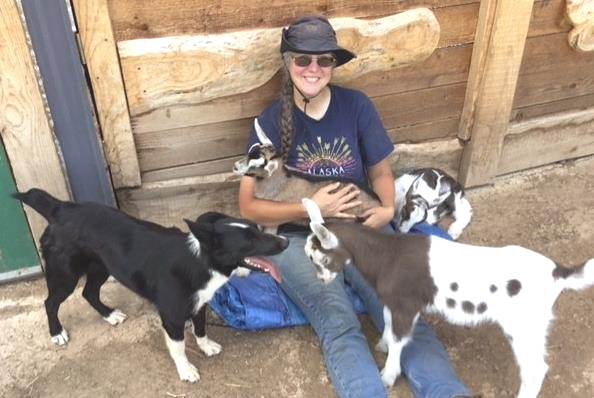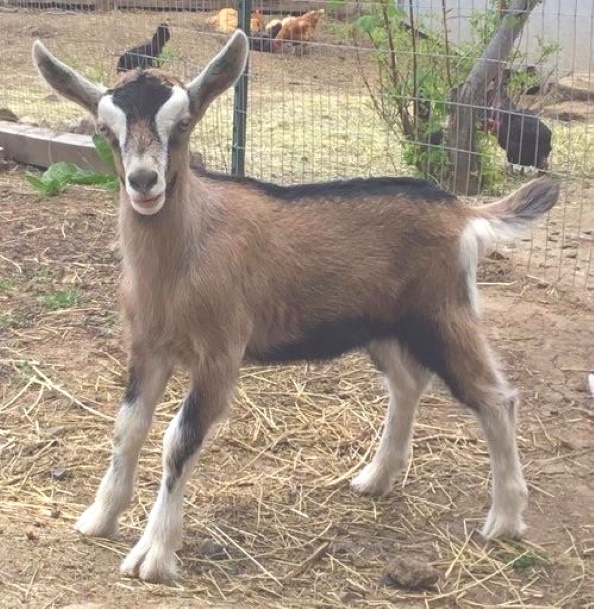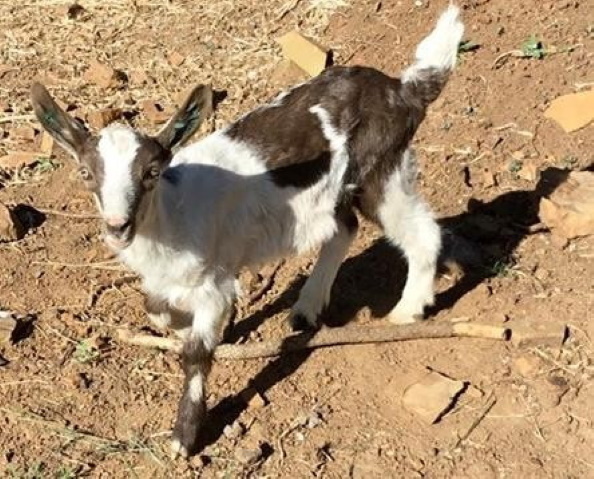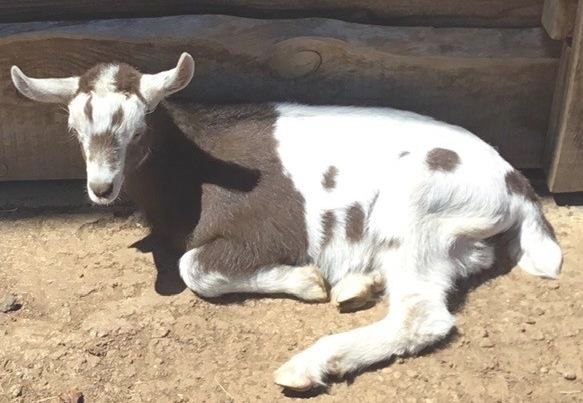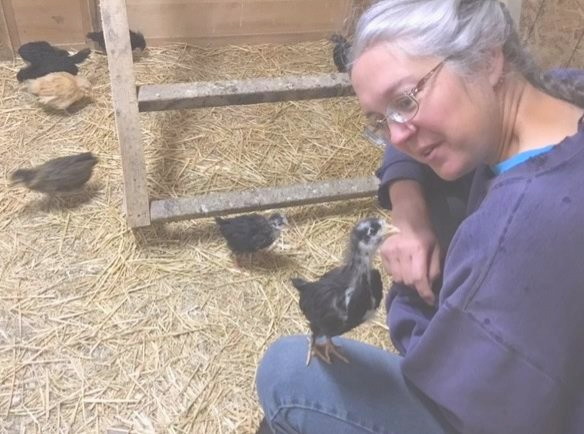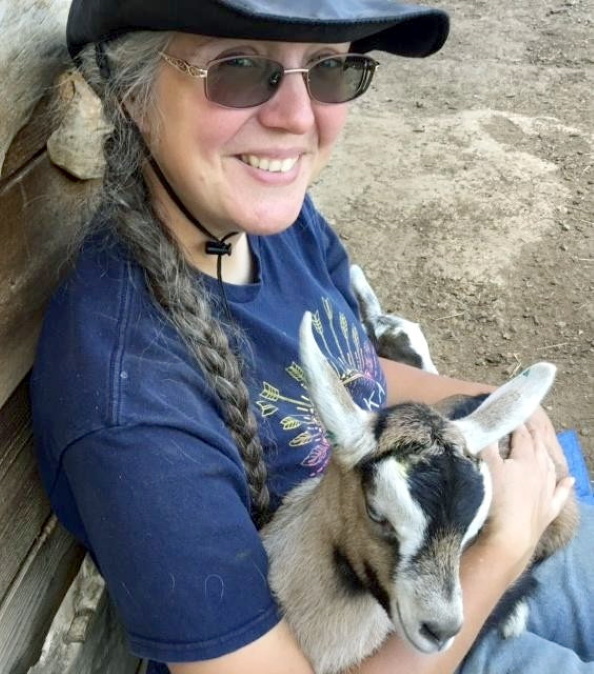10/4/2025
Hello everyone,
You haven’t heard from me in a while but I’m ok. It’s just been a very full summer of picking produce, taking care of chickens and chasing goats. I have to say this has been the busiest summer yet and a lot of it is thanks to the goats and the extra batch of chicks we raised. This year we had the three bottle fed kids that we kept separate from the larger goats and we are still bottle feeding them through to the end of this month. Our buckling Tovia, has to be large enough to do his job hopefully mid to late November with our current three does. The three doelings will grow another year before we breed them. Our buckling Tovia and our wether Winter, moved in together in August. I put the three doelings together at the same time. For the most part the doelings got along pretty well but Winter and Tovia had to do some head butting until they established the male dominancy ladder. Tovia is very gentle and docile plus two months younger than Winter so he follows Winter around wherever he goes. We are very pleased with how gentle and sweet our little buckling is. He is completely different from how Vincent behaved. Vinny was made into goat burger back in May after he knocked Mark down with his aggressiveness.
To add to the busyness, I sold produce and eggs twice a week. One day I set up in White Bird, Idaho and another day in Kooskia, Idaho. White Bird was averaging over $200 for the day and Kooskia between $100 to $200. Kooskia farmers market had a lot of produce venders so it was more competitive. Plus, Kooskia is an hour and a half drive away from home. I recently came into contact with the new owners of Hoots Shop & Stay which is a gas station/convenience store/restaurant located off of Hwy 95 outside of White Bird, Idaho. They approached me at my little stand this past Sunday in White Bird and offered me a spot on their property to sell produce. I am very much looking forward to this opportunity and believe I will start setting up there next year on the days I would normally go to Kooskia. Thus, allowing me to not have to travel as far but hopefully gain a wider network of customers.
My strawberries and eggs have made up of about half my earnings this summer and I will end the year with about double what I made last year (over $5,000 total this year). It is still not enough to live off of but it is a good feeling to see our little business grow. Mark’s earnings from working in Alaska for the summer have helped pay for the construction work on the barn this summer and the new duck house being built this month. We currently have two ducks, Muscovy drake and a Pekin hen and once the duck house is finished will be acquiring three more Muscovy hens from a friend of ours in Riggins, Idaho. We also plan to order about a dozen Khaki Campbell ducklings this fall that will start laying in the spring. Khaki Campbell ducks are supposed to be one of the best laying ducks out there. They are made up of three different breeds of ducks, the mallard, Rouen and Runner duck. They average 250-300 eggs a year. We currently have one customer who prefers our Pekin duck eggs over the chicken eggs. Our Pekin only lays during the spring and summer though and now that the weather has turned cold, she has stopped laying.
In July we acquired another farm critter. A neighbor gave us four coturnix quail, three hens and one male. They lay very tiny eggs that are jam packed with more nutrients than a chicken egg. I find the eggs much milder in flavor than a chicken egg. Mark has always wanted to try coturnix quail. They are very quiet, a little flighty but easy to take care of which was a good thing for my busy schedule.
Our contractor Robin started work on the wings of the barn in August. Both sides are now complete. The chicken side has a fenced section now for chicks to come outside of the brood room and yet be safe from the adult chickens. The goat side is sectioned up into three sections. This allows each inside stall to have a little atrium for the goats to go outside. This is especially nice in the hot summer where I can leave the door open and they can sleep outside and yet still be enclosed for safe keeping from predators. The barnyard is sectioned up into two sections now. One small section for the boys to roam in and a larger section for the girls. During the spring and summer, I still take them out to electric fenced in pastures for them to graze. Once it gets dry here though the electric doesn’t zap as much so sometimes the goats don’t want to stay put and that’s where it is nice to have a tall heavy duty wire fence for the barnyard for my misbehaving goats. Just when you think you have everything figured out, the goats prove you wrong. I once watched Tovia literally climb the five-foot barnyard fence and go over into the chicken yard to eat the maple tree and wild rose bushes. Fortunately, the maple tree is tall enough and him short enough that he couldn’t do much damage but it was quite the show seeing him climb that fence. Mark stabilized the fence and made it harder for Tovia to climb it. Tovia has tested it but so far hasn’t been able to climb it again.
Mark did make it home from Alaska on September 25th. He was put to work right away fixing a goat stall door that our largest girl knocked down that same day. I guess that was her way of welcoming Mark home. She is one strong goat!
Each night feels colder than the last one. We haven’t gotten our first frost yet but I know it will be any day now. I still have tomatoes and melons ripening and lemon cucumbers galore. Even the strawberries continue to produce. We have been digging potatoes and carrots. It has been a very blessed summer. (Since I wrote this, we did finally get our first frost so now it is clean up time on the garden.)
One last wonderful thing that happened this summer, I met another fellow bead artist. I was set up at the Kooskia farmers market and this very nice older lady came by. She was wearing a gorgeous beaded necklace that I found very elegant. It was like a string of pearls but with beads. She saw my beaded art and mentioned that she was getting out of beading and wanted to find someone who would appreciate what she had. I was enthralled. Several weeks later I met with her to discuss beads. I discovered that she was 90 years old and had been beading since 2007. She had so many beads of so many designs, shapes and sizes. My bead stash looked so small compared to hers. I saw some of her work and decided that she had more talent in her little pinky than I had in all of my fingers. She also paints, knits, does flower arrangements and a whole lot more. What a neat person. I filled up Mark’s truck with a bookcase and many boxes worth of beads, findings, gemstones, pearls, etc. She asked for $1000 and I estimate there was easily $3000+ worth now at my fingertips. I am so excited to start trying some new things this winter. I’ve already got some ideas to play with.
May this find you all well and that you too have had a blessed summer. Take care everyone.
Many Blessings,
Joey
